Mokwheel made waves a few years back with the original Basalt, a bike that gave this newcomer some real traction in the e-bike world. It wasn’t flawless, but with its 4-inch fat tires and all-terrain attitude, it found a sweet spot—especially for riders who wanted a rig that could handle sand, snow, or backcountry trails without breaking a sweat.
What set it apart was the power station feature: add optional solar panels and a 1000W inverter, and you’ve got a bike that can charge devices or even itself off-grid, assuming the sun’s cooperating. That combo earned it a solid fanbase and arguably cemented Mokwheel’s rep as a brand worth watching.
Now we’ve got the Basalt 2.0 ST, a refreshed take on that winning formula. It sticks with the step-through frame for easier access, keeps those beefy tires for wherever you’re headed, and still offers the power station option for the off-grid crowd. But Mokwheel’s thrown in some upgrades: a detachable display that doubles as a security feature, frame-integrated taillights with brake and turn signals, and a handful of other refinements we’ll unpack.
So, let’s dig in and see if this updated Basalt 2.0 ST delivers enough to justify your money and a spot in your garage.
My Experience Riding The Mokwheel Basalt 2.0 E-Bike
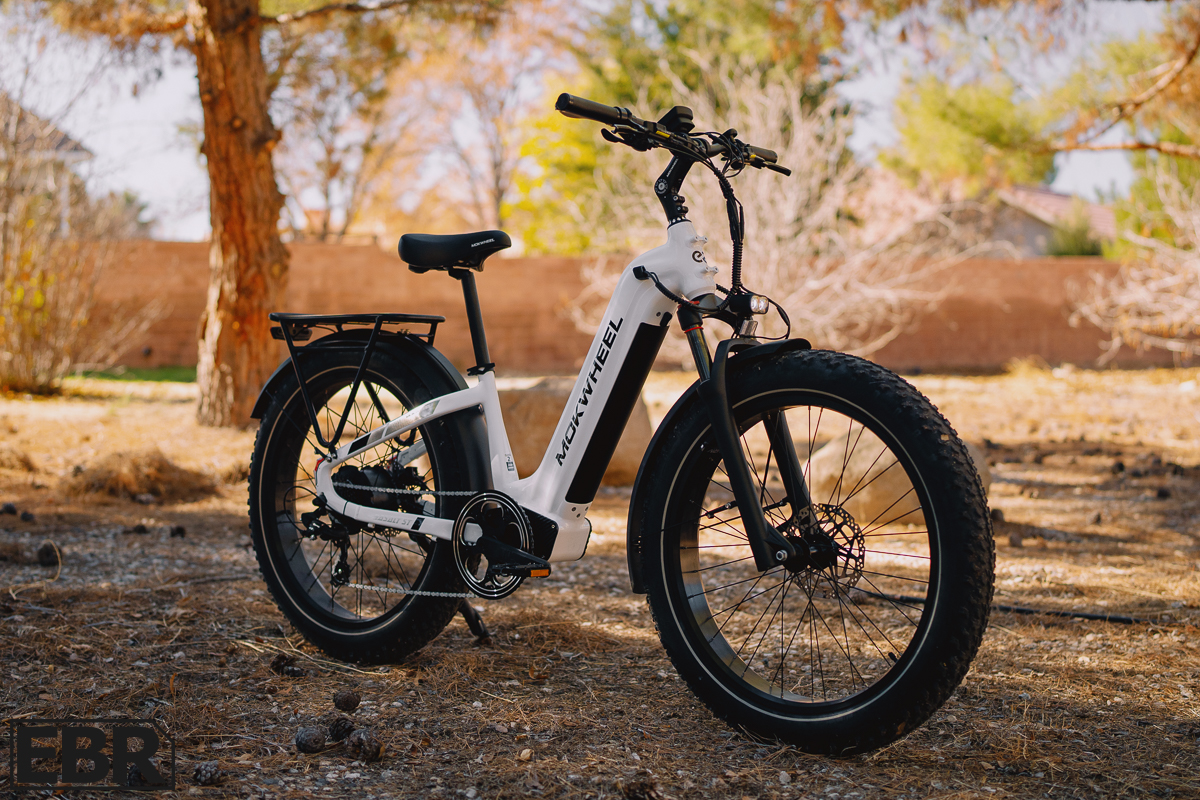
Mokwheel shipped me the Basalt 2.0 ST in white for testing, and it’s a clean-looking machine right off the bat. The step-through frame makes hopping on and off a no-brainer—less hassle than swinging a leg over, though they’ve got a high-step version if that’s your preference. The adjustable stem, ergonomic platform grips, and padded saddle come together for an upright, comfy ride. With the bars and stem tweakable, I got the fit dialed in pretty quick, and it felt solid for cruising without hunching over.
Comfort’s a strong suit here. The upright geometry, 110mm suspension fork, and 26×4” fat tires—settled at 15 psi, my go-to for plushness—smooth out the ride, whether it’s pavement or dirt. Toss in the padded gel grips and a decent seat, and I’ve got zero complaints. It’s built to keep you rolling without feeling beat up, no matter the terrain.
Fit’s a different story. They sent me the Standard size,advertised as being good for riders 5’2” to 6’4”. I’m 5’11”, and with the seatpost at the minimum insertion line, I couldn’t quite nail that proper pedal extension—you know, the slight knee bend you want for solid pedaling. It was close, I’ll give them that, but I’m left wondering how a 6’2” or 6’4” rider makes it work. If you’re over 6 feet and plan to pedal a lot, I’d say test it out first. Throttle-heavy riders won’t mind, though—it’s comfy enough to lean on the motor and call it a day.
Braking comes via Tektro two-piston hydraulic discs with 180mm rotors. They’re adequate, stopping the bike fine in most cases, but on an 82-lb rig, I’d prefer a four-piston setup for more bite. It’s not a flaw, just a wish list item if you’re hauling weight or dropping steep stuff.
The motor’s where things get interesting. This 750W rear hub (peaking at 1100W) churns out 90 Nm of torque—plenty for a fat-tire bike. Hills were no trouble, within reason, and I never felt underpowered. What stood out were the controls. You can set speed limits for both pedal assist and throttle right on the display, a handy tweak if you’re easing into e-bikes or keeping it safe for a kid borrowing the ride. There’s also a “motor sensitivity” setting—first I’ve seen like this—running from 1 to 5. At 1, it’s tame; at 5, I got a quick rear tire spin when I punched the throttle. Mild or wild, your call and I think a lot of folks will like that level of control. Switching between Class 2 (20 mph) and Class 3 (28 mph) is just a few button presses as well, making the entire process smooth and simple which I’m always a fan of.
Mokwheel’s updated torque sensor is a leap forward from Mokwheel’s older versions. A couple years ago, I felt their assistance could feel a bit rough (or surgy?); but now, I’m happy to report it’s more polished and responsive in tracking my effort with accuracy and in-turn matching that in pedal assist power delivery. Solid upgrade there.
All in all, the Basalt 2.0 ST rides well, looks sharp, and brings some unique tech to the table—like the optional power inverter and solar charging. It’s a fat-tire bike with personality, and I can see why it’s got fans. It’s not without quirks, but it’s a contender worth sizing up for yourself.
Range
Estimated Range (from Mokwheel): 60 to 80 miles
Real World Range Test Results:
- My MIN PAS: 60 miles
- My Max PAS: 35 miles
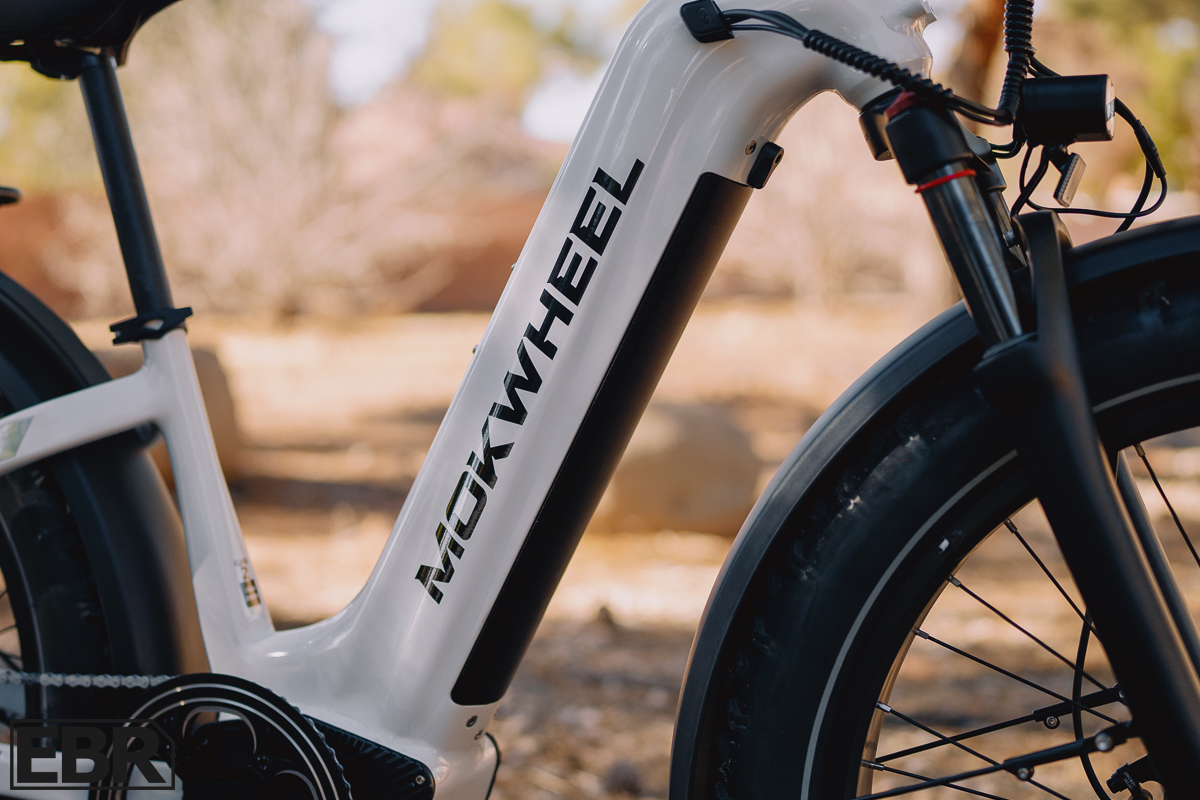
Range is one of those e-bike specs that sounds great on paper but can get messy in the real world. You’ve got rider weight, terrain, elevation, tire pressure, how hard you’re pedaling—or not—and a dozen other factors that can stretch or shrink the distance you’ll squeeze out of a charge. Mokwheel pegs the Basalt 2.0 ST at 60 to 80 miles with its 48V 19.6Ah battery, which is a hefty 941Wh of juice. That’s a bold claim for a fat-tire rig, so I took it out to see what it’s really got.
I ran my tests with the tires at about 18 PSI which feels soft enough for comfort and still firm enough to roll decently on a mostly flat paved path to help keep things consistent. Rider weight’s in the mix (I’m around 175 lbs), and I stuck to a steady pace. At minimum pedal assist (PAS 1), I clocked 60 miles before the battery called it quits. Crank it to max assist (PAS 5), and I got 35 miles. Compare that to Mokwheel’s 60-80 mile estimate, and I’m landing on the lower end at low power, well under at full blast. It wasn’t surprising, having fat 26×4” tires and an 82-lb bike don’t exactly scream efficiency when you’re leaning on the motor hard.
What’s that mean for you? If you’re a light pedaler or throttle junkie tackling mixed terrain—think gravel, hills, or soft stuff—you’re looking at closer to that 35-mile mark, maybe less if you’re hauling gear or pushing 200+ lbs. Stick to low assist, flat ground, and a bit of leg work, and 60 miles (or more) is in reach, though 80 feels like a stretch unless you’re drafting a tailwind with featherweight cargo. The power station angle’s a bonus here: if you’ve got the optional solar panels and some sun, you can top off off-grid, but that’s more for overnighters or multi-day trips than a quick fix.
All in all, it’s a solid range for a fat-tire e-bike—better than some, not record-breaking. If you’re commuting 20 miles round-trip or hitting trails for a few hours, it’s got you covered. Just don’t bank on maxing out that 80-mile dream without perfect conditions and a light touch. Plan your rides, and it’ll treat you right.
Power (Motor & Battery)
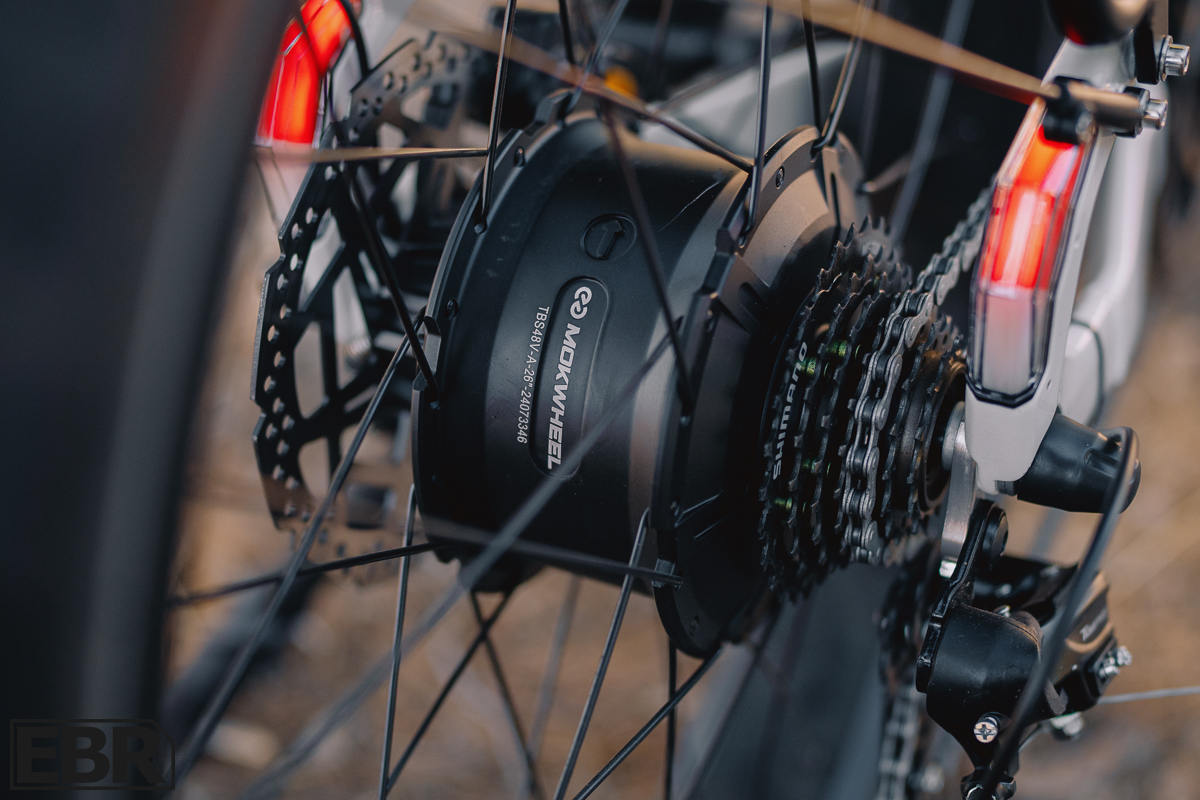
The Mokwheel Basalt 2.0 ST’s power system is the muscle behind its fat-tire, go-anywhere attitude. You’ve got a 750W rear hub motor, peaking at 1100W, pushing out 90 Nm of torque. That’s solid grunt for an 82-lb bike with 26×4” tires—plenty to tackle hills around town or plow through sand and gravel around camp sites.
The Basalt 2.0 shipped to me in a Class 2 setting, topping out at 28 mph with pedal assist, though throttle-only caps at 20 mph in Class 2 mode. A few clicks on the display let you switch between them easily, which is handy for staying legal or dialing back the pace. There is one catch: Mokwheel lets you bump that throttle to 28 mph in the settings if you want the extra kick—just check your local laws first, since that could put you in hot water depending on where you ride.
Powering it all is a 48V, 19.6Ah battery—941Wh of capacity, UL 2271 certified for safety. Weighing in at 11.7 lbs, it’s a hefty pack, but that’s what you need to feed this kind of range and muscle. Mokwheel claims 60-80 miles, though my tests hit 60 on low PAS and 35 on max (check the Range section for the full rundown). For a bike this burly, that’s a decent showing—it’s no lightweight commuter, it’s an all-terrain workhorse, and the battery’s built to match. Spares are going for $199 right now, and grabbing one with an extra detachable HD color display/controller could keep this thing rolling for years if you’re planning to rack up the miles.
The motor’s brain is a highlight. Mokwheel lists both a dual-sided torque sensor and a cadence sensor, but I couldn’t swap between them—seems like torque’s running the show. That’s fine by me; this updated torque sensor is leagues ahead of their older stuff, delivering assist that’s smooth and synced to your effort. You can fine-tune it too: a “motor sensitivity” setting from 1 to 5 goes from tame to punchy—level 5 even spun the rear tire for a split second on throttle. Speed limits for PAS and throttle adjust on the fly, a plus if you’re easing into e-bikes or handing it off to someone who needs a governor.
This power setup suits a fat-tire all-terrain bike to a T. The 750W motor (with that 1100W peak) has the oomph to haul you and your gear over rough stuff, and the 941Wh battery keeps it humming longer than most in this class. It’s not here to sip power like a skinny-tire city bike—it’s about torque and staying power, perfect for trails, hunting runs, or off-grid trips with the inverter add-on. If that’s your game, it’s got the goods; just know what you’re signing up for.
Components
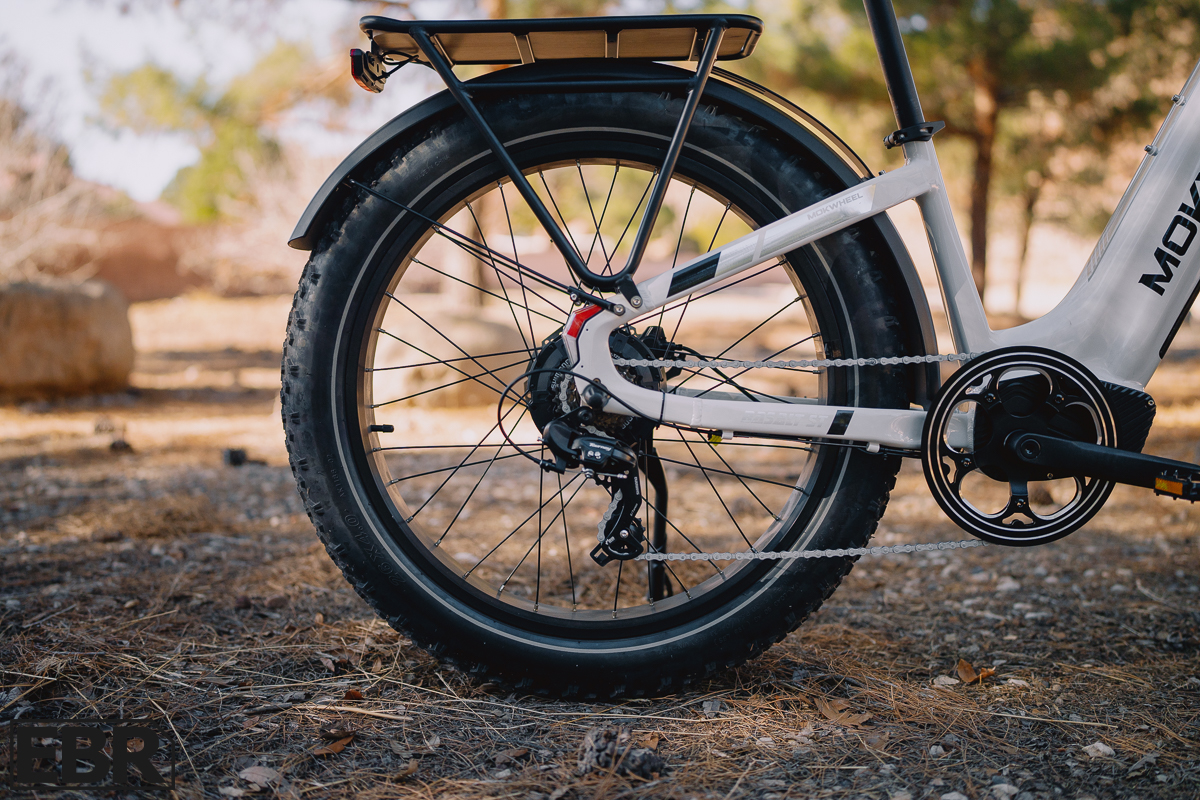
The Mokwheel Basalt 2.0 ST’s component spec is what you’d expect from a fat-tire e-bike aiming to balance off-road chops with everyday rideability. It’s not a high-end trail shredder, but it’s built to handle the rough stuff while keeping things comfy and functional. Here’s the rundown and how it fits this rig’s all-terrain mission.
Frameset and Suspension
The backbone’s a 6061 aluminum frame—standard stuff, tough enough for trails without breaking the bank. Up front, you’ve got a coil spring suspension fork with 110mm of travel, complete with lockout and preload adjustment. It’s not plush like an air fork, but for a bike this size, it takes the edge off bumps and roots decently. The 26”x4.0” puncture-resistant tires are the real stars—fat, grippy, and ready to roll over sand, snow, or gravel. Paired with 6061 aluminum wheels, it’s a sturdy setup that leans toward durability over lightweight speed, which suits this bike’s go-anywhere vibe.
Drivetrain
The gearing’s a Shimano 7-speed setup—nothing fancy, but it gets the job done. You’ve got a Tourney rear derailleur, a 14-28T cassette, and a 52T aluminum alloy crankset, all shifted via Shimano trigger levers. It’s a tight range, so don’t expect to spin up steep climbs without leaning on the motor, but for flatter trails or mixed terrain, it’s plenty. The chainring’s a beefy 52T, which pairs well with the 750W motor’s torque—more about power than pedaling finesse. This isn’t a pure cyclist’s drivetrain; it’s there to back up the e-bike system, and for that, it’s solid enough. Keep it lubed, and it’ll hold up for the kind of casual trail bashing or utility runs this bike’s made for.
Cockpit, Brakes, and Bits
The cockpit’s built for comfort and control. An adjustable stem and 31.8mm, 680mm-wide aluminum handlebar let you dial in your reach—nice for tweaking that upright stance. Lock-on ergo grips keep your hands planted, and the Mokwheel leather saddle’s padded enough for longer hauls. The seatpost—I’m guessing a 30.9mm or 31.6mm alloy based on similar bikes—feels sturdy, though exact specs weren’t listed. Alloy flat pedals with reflectors and traction studs round it out; they’re grippy enough for sneakers, no complaints there.
Braking’s handled by Tektro HD-E350 hydraulic discs with 180mm rotors. For an 82-lb bike, they’re adequate—smooth and reliable—but I’d still love a four-piston setup for more stopping power, especially loaded up or on steep drops. They’ll do for most trail or town rides, just don’t expect race-level bite.
The Takeaway
This component mix screams practical all-terrain e-bike. The suspension and fat tires soak up the rough stuff, the drivetrain’s a no-frills backup to the motor, and the cockpit keeps you comfy without overcomplicating things. It’s not a spec sheet to drool over if you’re a gearhead—Shimano Tourney and coil forks won’t win awards—but for a fat-tire rig meant to roam trails, haul gear, or play power station, it’s a cohesive package. You’re getting durability and function over flash, which fits the Basalt 2.0 ST’s purpose: a tough, versatile ride that’s more about getting out there than showing off.
Screen / User Interface / App
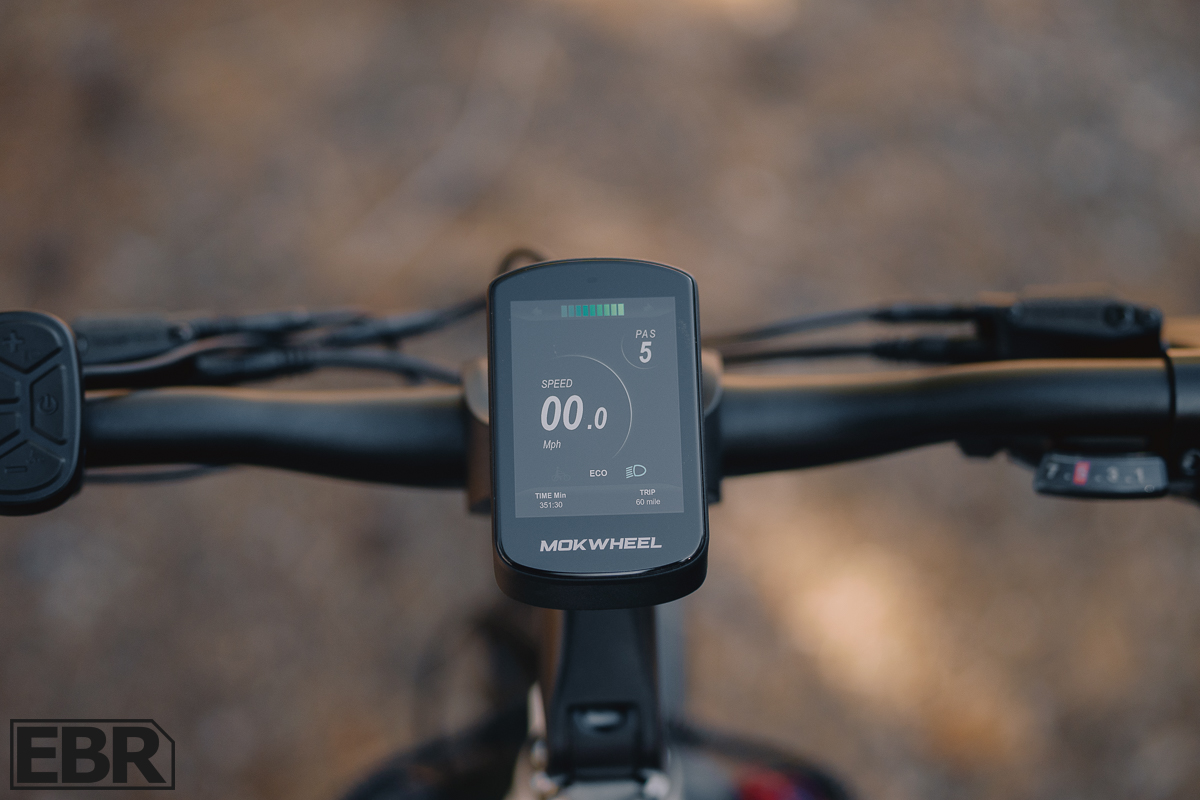
The Mokwheel Basalt 2.0 ST rolls out with a new display that’s a solid upgrade over the basics you’d expect on a fat-tire e-bike. It’s a high-contrast, full-color unit—bright enough to cut through direct sunlight without squinting, which is clutch when you’re out on a trail or rolling through town. The interface is clean and modern, not some clunky throwback. Your home screen’s got the essentials: speed, battery level, assist mode, distance—all right there, no digging required. Poke around a couple of hidden menus, and you can tweak the good stuff—swap between Class 2 and 3 (20 mph throttle or 28 mph PAS), set speed limits, or adjust that motor sensitivity I mentioned earlier (1 for chill, 5 for a kick).
What sets it apart is the quick-release trick. Pop the display off with a flick, and the bike’s dead in the water—motor won’t fire, throttle’s useless. It’s a simple, smart security move that more e-bikes ought to steal. Leave it locked up in public, and without that screen screaming “I’m an e-bike, nab me,” it’s less of a target. Sure, a determined thief could still roll it away, but it’s a layer of peace of mind that doesn’t cost you extra. Mokwheel’s keeping spares reasonable too—pair one with that $199 spare battery, and you’ve got a setup that could outlast the frame.
No app here, and honestly, I’m not mad about it. Everything you need lives in the display—no fumbling with Bluetooth or buggy software to get the bike dialed in. For a rig like the Basalt 2.0 ST—built for trails, off-grid hauls, or just bombing around—this keeps it straightforward. You’re not syncing ride data to Strava or tweaking settings from your couch; it’s all onboard, ready when you are. That fits the bike’s vibe: a no-nonsense, go-anywhere machine that doesn’t lean on your phone to feel complete. If you’re after simplicity with a dash of clever, this display delivers.
Mokwheel Basalt 2.0 Model Options
The Mokwheel Basalt 2.0 ST comes with a few choices to fit your style and needs, built around its core as a fat-tire, do-it-all e-bike. It’s not a lineup with a million flavors, but what’s here makes sense for a rig aimed at trails, utility, or off-grid adventures. Here’s the breakdown and what it means for you.
Frame and Fit
You’ve got two frame sizes: Standard, specced for 5’2” to 6’4”, and Large, stretching from 5’6” to 6’8”. Both are step-through designs—easy on, easy off—which is the only flavor the 2.0 ST comes in (though Mokwheel offers a high-step elsewhere in the Basalt line). The geo’s upright, comfy, and adjustable with that stem, but I’ll be straight: at 5’11” on the Standard, I couldn’t quite get full pedal extension (see My Experience). Taller folks—6’2” and up—might feel cramped on the Standard, and even the Large could be a stretch at 6’8” if you’re pedaling hard. It’s a throttle-friendly setup, no doubt, but if you’re long-legged and love to mash, test it first. Three attachment points—fenders, racks, and a bottle cage—give you some mounting flexibility, which is handy for gearing up.
Four options here: Olive Green, White, Orange, and Camo. They’re bold without being garish—White’s clean, Camo’s got that outdoorsy edge, and Orange pops if you want to be seen. Pick what suits your vibe; they all roll the same. I tested the White, and it’s a sharp look that holds up to dirt better than you’d think.
Included Accessories
Out of the box, you get fenders and a rear rack—solid inclusions for a bike this practical. The fenders keep the muck off on wet trails, and the rack’s a no-brainer for hauling gear, groceries, or whatever you’re schlepping. No need to shell out extra for the basics, which is a win on a $1,999 rig.
In terms of optional accessories, this is where the Basalt 2.0 ST flexes its ‘power station’ utility. You can tack on a 1000W power inverter and solar panels to turn it into a rolling charger—perfect for off-grid trips or keeping your gadgets alive. A spare battery’s $199, bags and suspension seatposts up the comfort, and locks, rearview mirrors, saddles, and water bottle cages round out the list. It’s a decent spread—lean into the power station angle if that’s your jam, or just grab what makes the ride yours. Warranty’s a standard 2 years, with 1-, 2-, or 3-year extensions available if you want more coverage.
This lineup keeps it simple but versatile. The step-through frame and fit range aim for accessibility, though taller riders might need to double-check the geo. Colors give you some personality, and the included fenders and rack are practical for a bike that’s half trail beast, half workhorse. The optional extras—especially that inverter and solar setup—lean hard into the Basalt’s off-grid niche, which is its real calling card. It’s not about endless configs; it’s about picking a solid base and tweaking it for your kind of riding. For an all-terrain e-bike with this kind of purpose, it’s a smart, no-fuss approach—just know your size and plan ahead.
Is The Mokwheel Basalt 2.0 Worth Buying?
The Mokwheel Basalt 2.0 ST is a fat-tire rig that’s grown up a bit from its original roots, packing a solid mix of power, comfort, and that unique power-station twist. It’s got a lot going for it: a 750W motor with 90 Nm of torque that chews up hills, a 941Wh battery that’ll push 60 miles on low assist (35 on max), and a comfy setup with 110mm of suspension and 4-inch tires that smooth out the rough stuff. The new display’s a bright spot—literally—easy to read, tweakable, and a slick security feature when you pop it off. Throw in the included fenders and rack, plus options like solar panels and a 1000W inverter, and it’s a versatile beast for trails or off-grid hauls.
It’s not perfect, though. The fit’s a head-scratcher—Standard size tops out at 6’4” on paper, but at 5’11” I was stretching for proper pedal extension, and taller riders might feel squeezed. The Large frame might help, but test it if you’re over 6 feet and love to pedal. Brakes are solid with Tektro hydraulics, but on an 82-lb bike, a four-piston setup would bite harder. The drivetrain’s basic—Shimano Tourney 7-speed does the trick, but it’s no climber without motor help. And while the torque sensor’s leaps ahead of Mokwheel’s old stuff, the “dual sensor” claim feels like a stretch since I couldn’t toggle it.
So, who’s this for? If you’re after a go-anywhere e-bike with fat tires and enough grunt to haul gear or tackle mixed terrain, this is your lane. It’s ace for throttle riders who don’t sweat pedal fit, or outdoorsy types who dig the solar-charging gimmick for camping or hunting trips. Commuters wanting a cushy ride with a rack will like it too, as long as the range fits your loop. If you’re a tall pedaler or need razor-sharp brakes for steep drops, you might want to look elsewhere—or at least give it a spin first.
The Basalt 2.0 ST isn’t the flashiest rig out there, but it’s a tough, practical ride with a few clever tricks up its sleeve. At $1,999, it’s a fair deal for what you get—just know its quirks and match it to your style. That’s the scoop; now it’s your call.
Pros
- The step-through frame feels snappy and holds firm under load, showing off some smart design work for a bike this versatile.
- Mokwheel’s optional folding solar panels and 1000W inverter turn this into a legit off-grid power station, redefining what an e-bike can do out in the wild.
- The updated display’s detachable faceplate kills the bike’s power when removed, a simple yet clever way to boost security without piling on pricey tech.
- Motor sensitivity settings let you tweak the ride from tame to rowdy, and I dug having that kind of control to shape how the bike responds.
- Comfort’s locked in with 4-inch tires, a padded seat, a suspension fork, and gel ergo grips—long rides don’t leave you aching on this thing.
Cons
- Fit threw me off at 5’11”—I couldn’t quite get full pedal extension, so taller folks over 6 feet might struggle if they’re big on pedaling, though throttle riders likely won’t care.

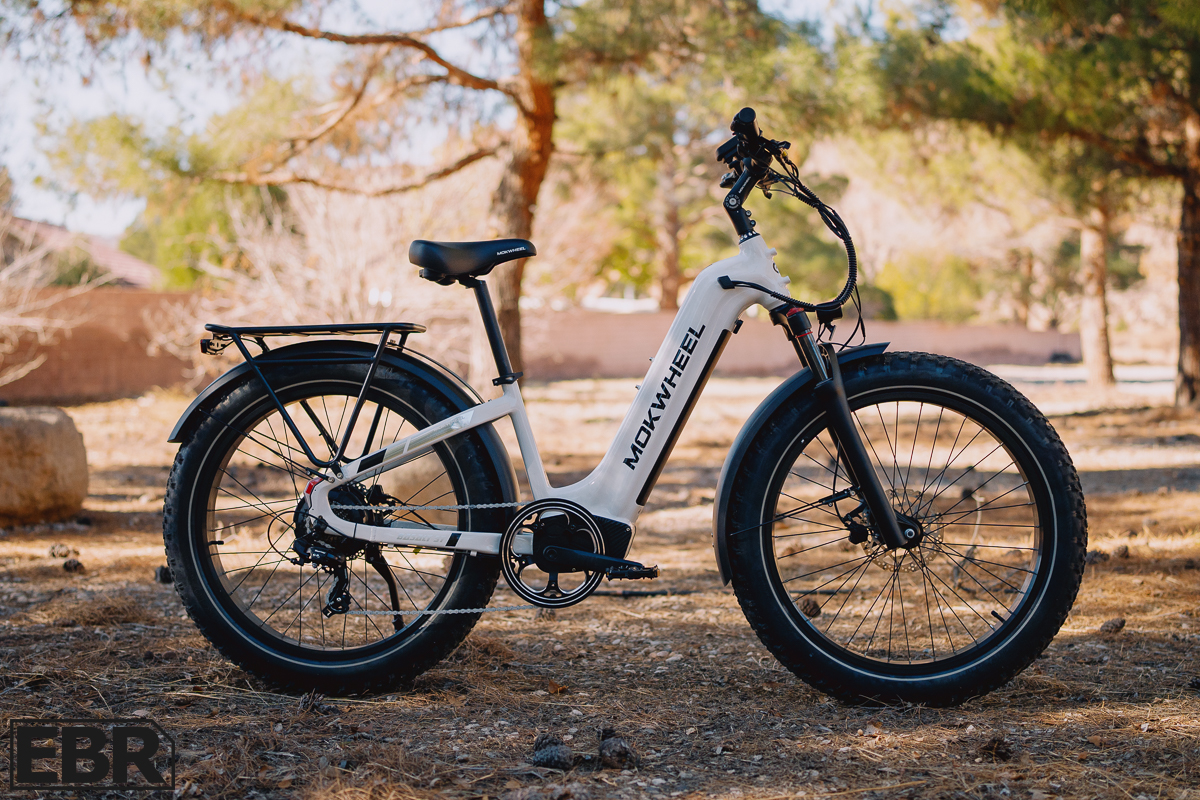
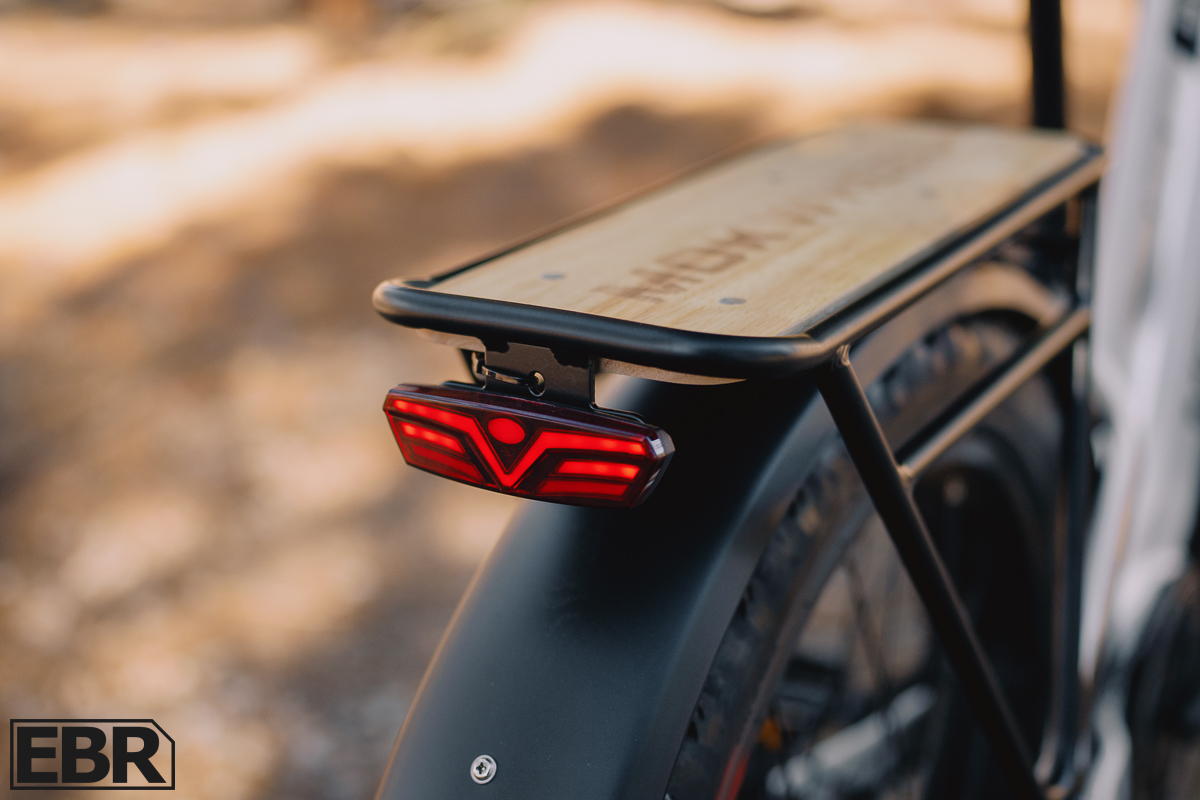
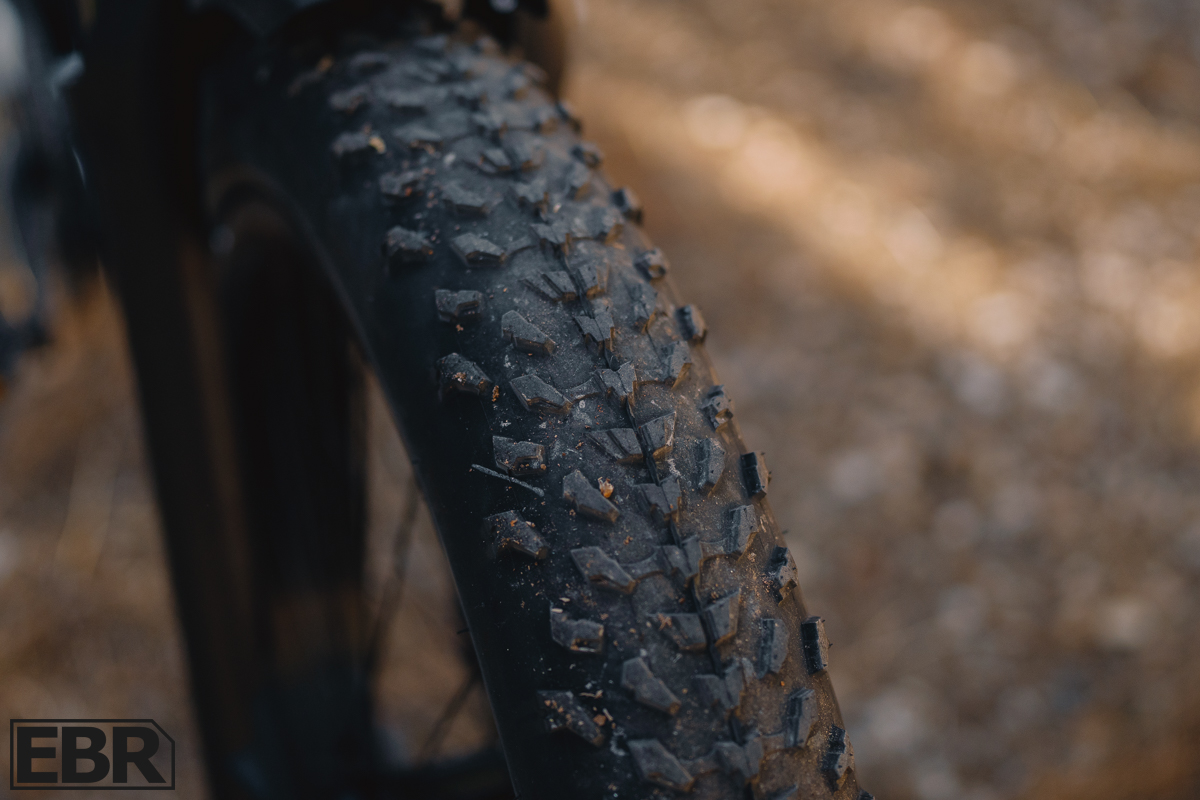
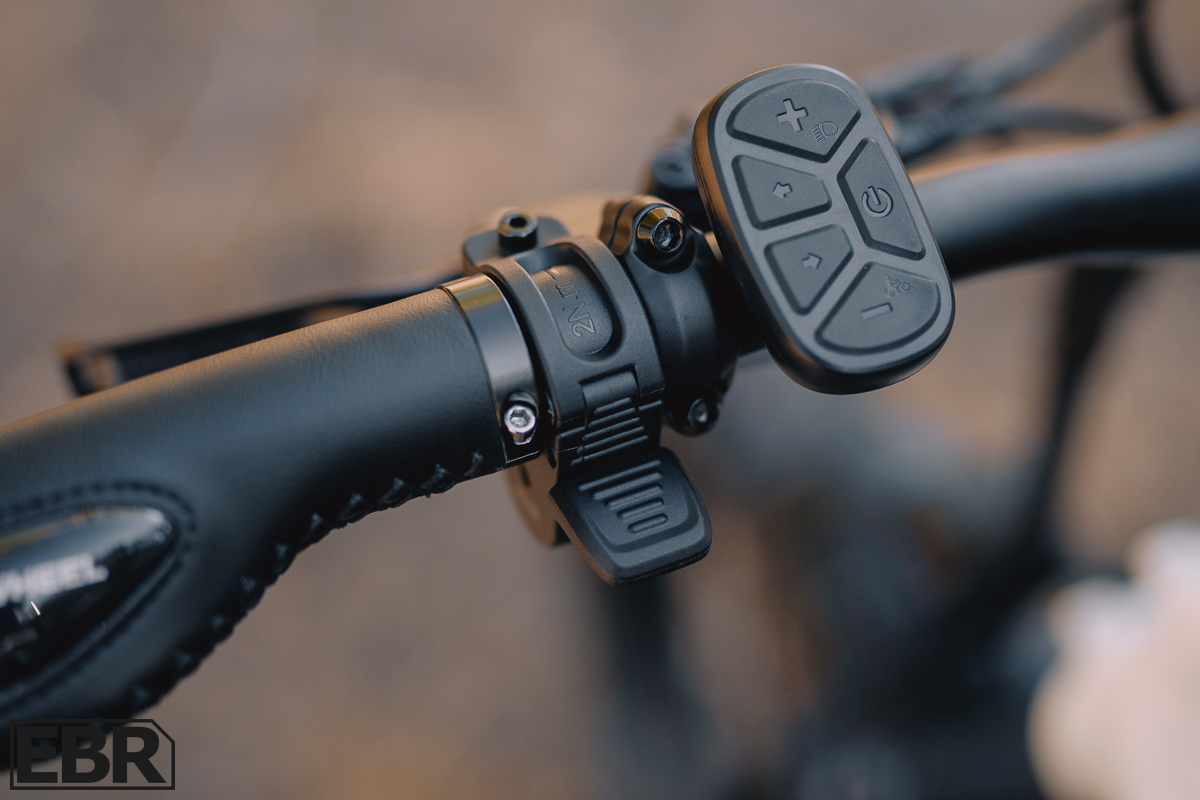
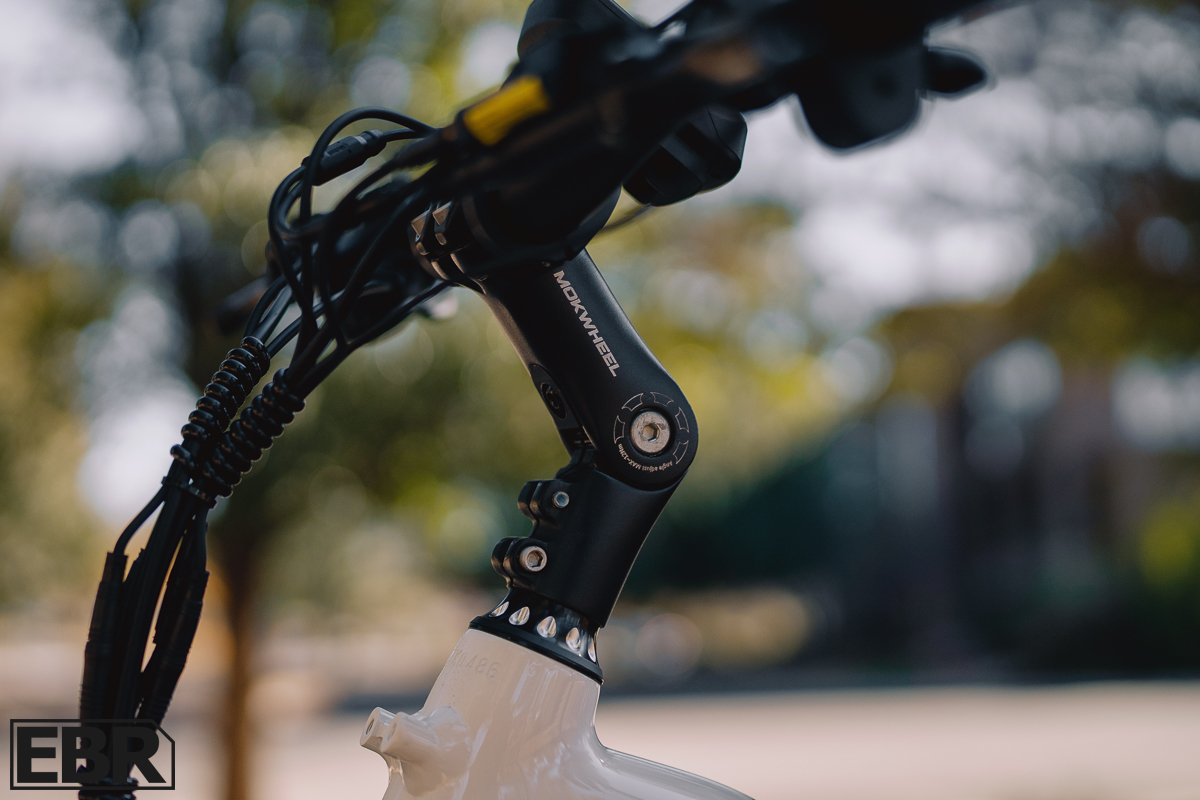
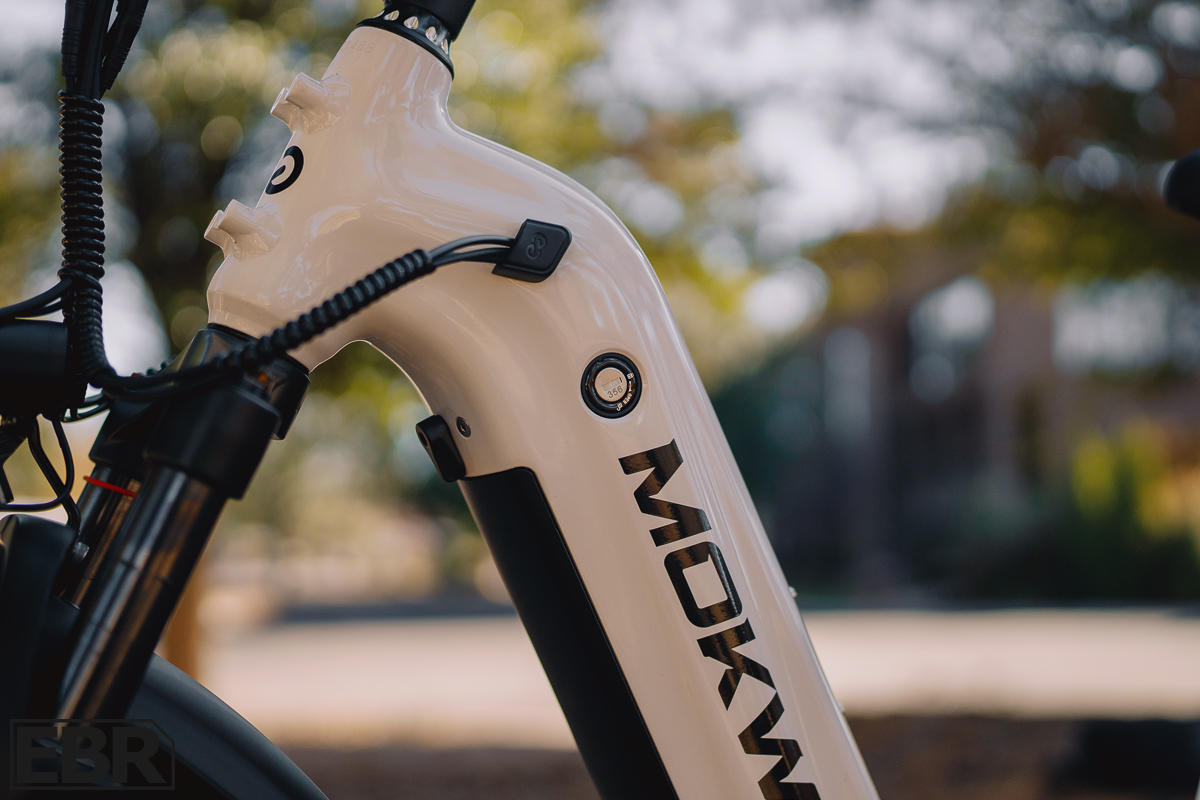

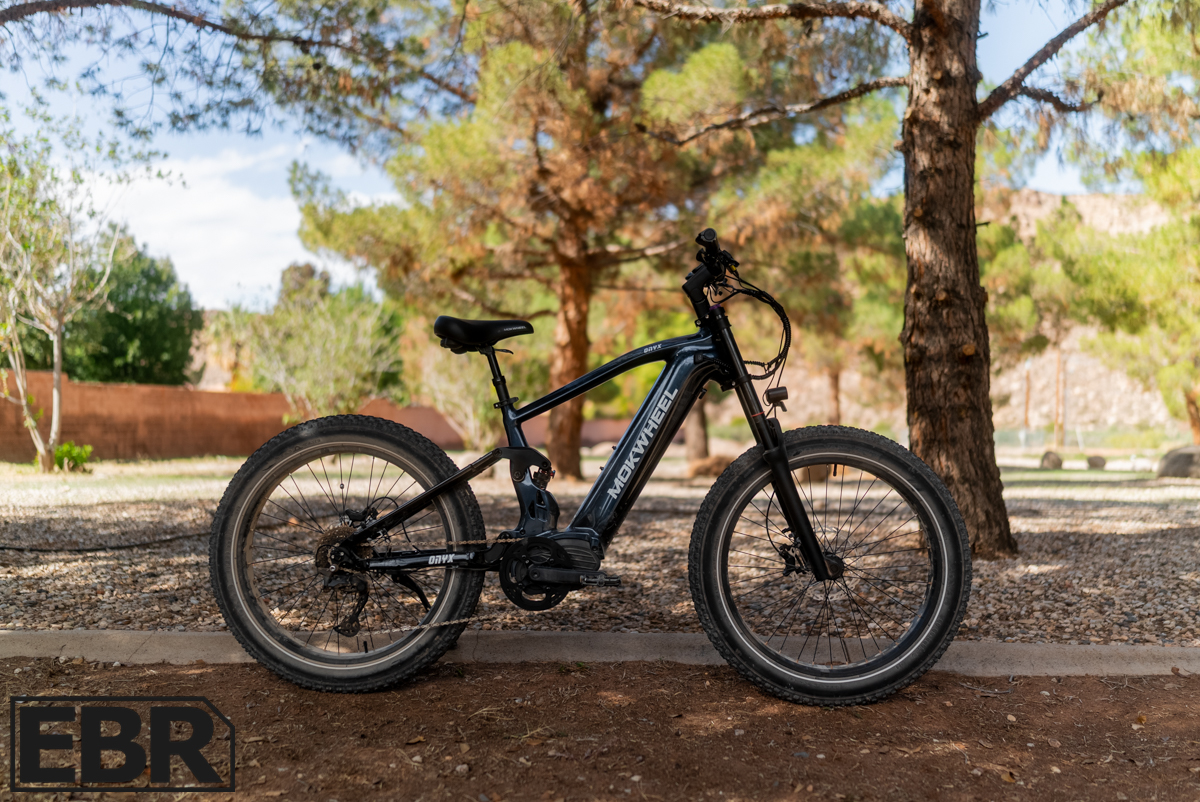
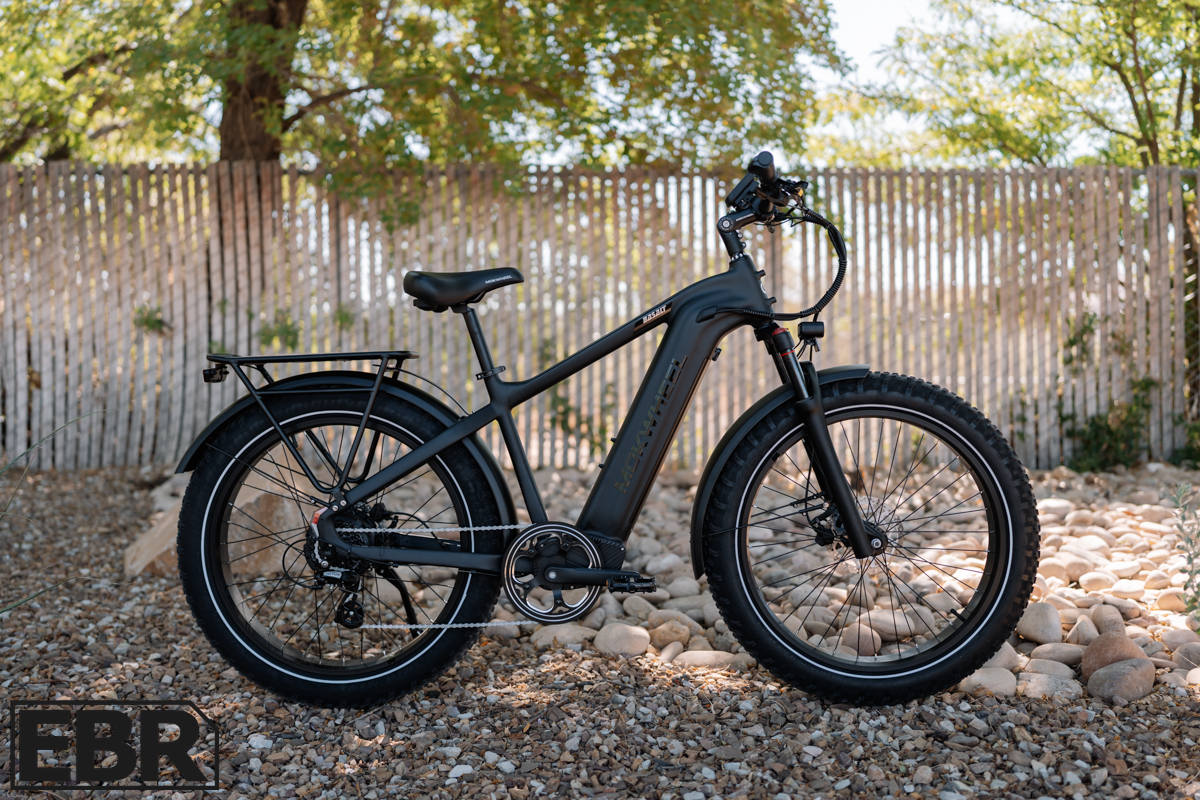
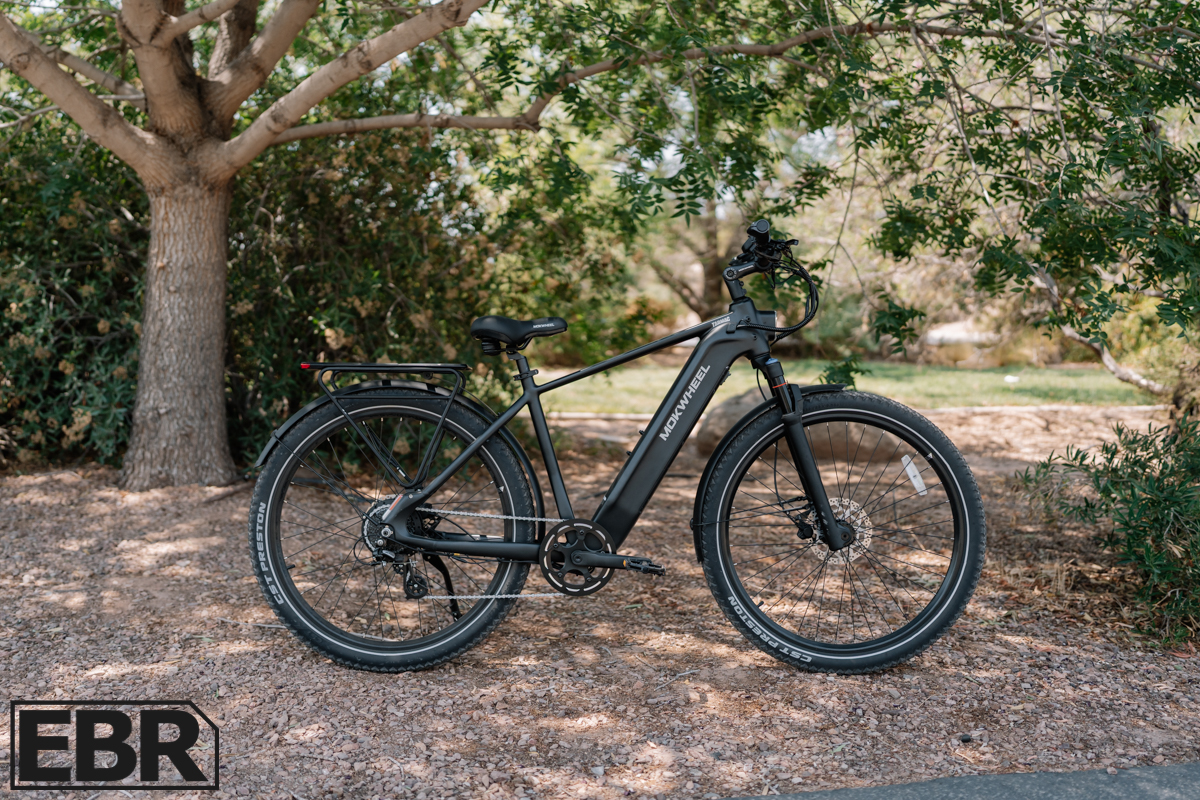
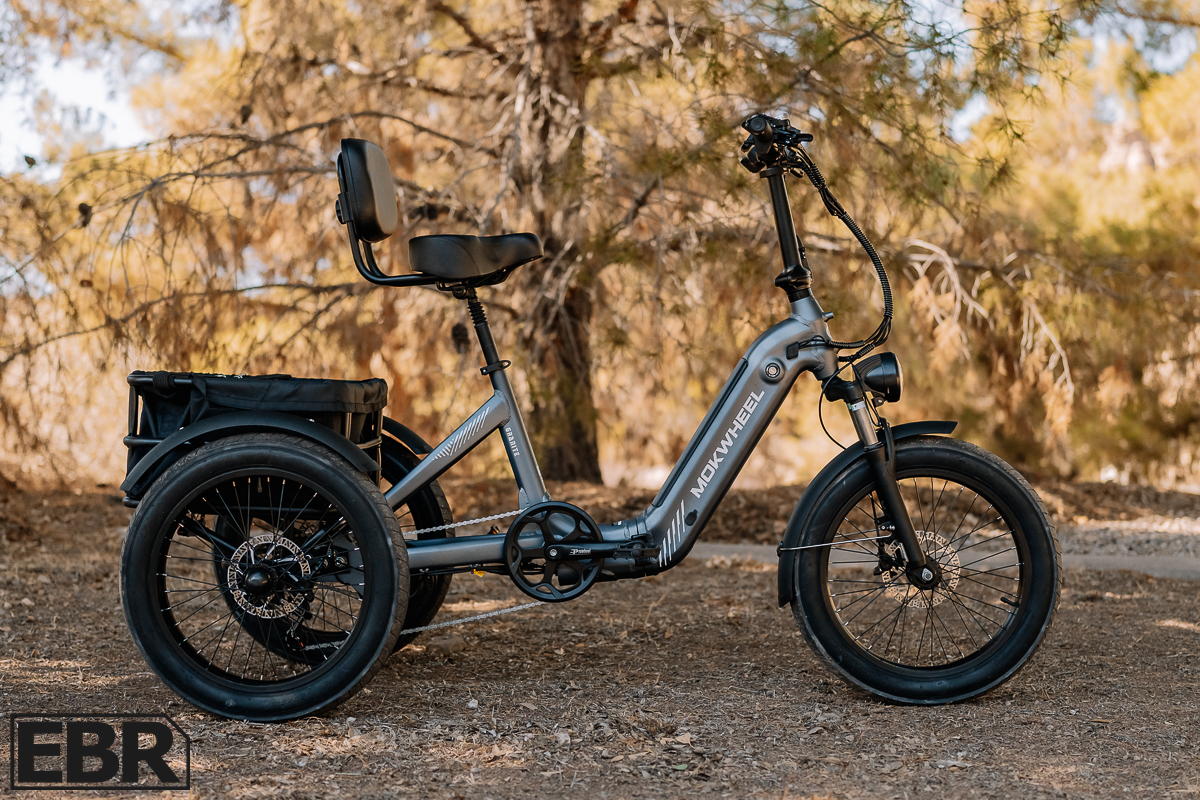
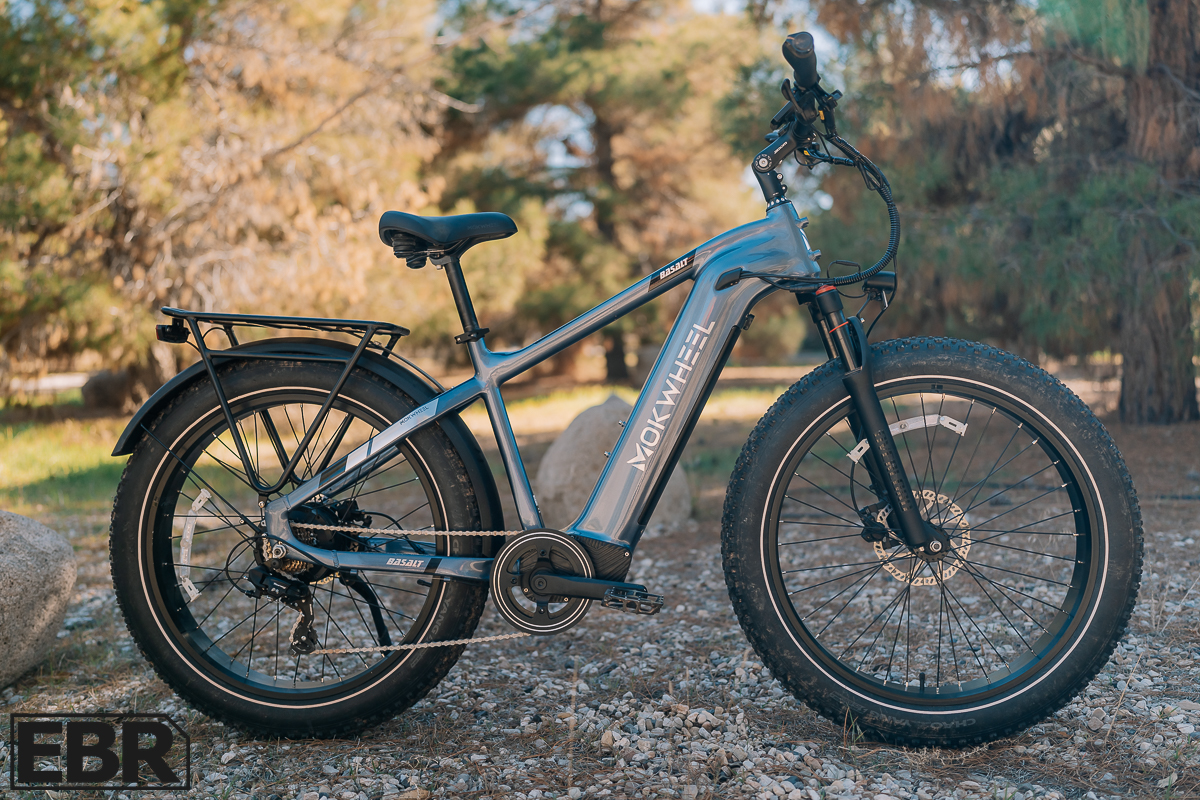
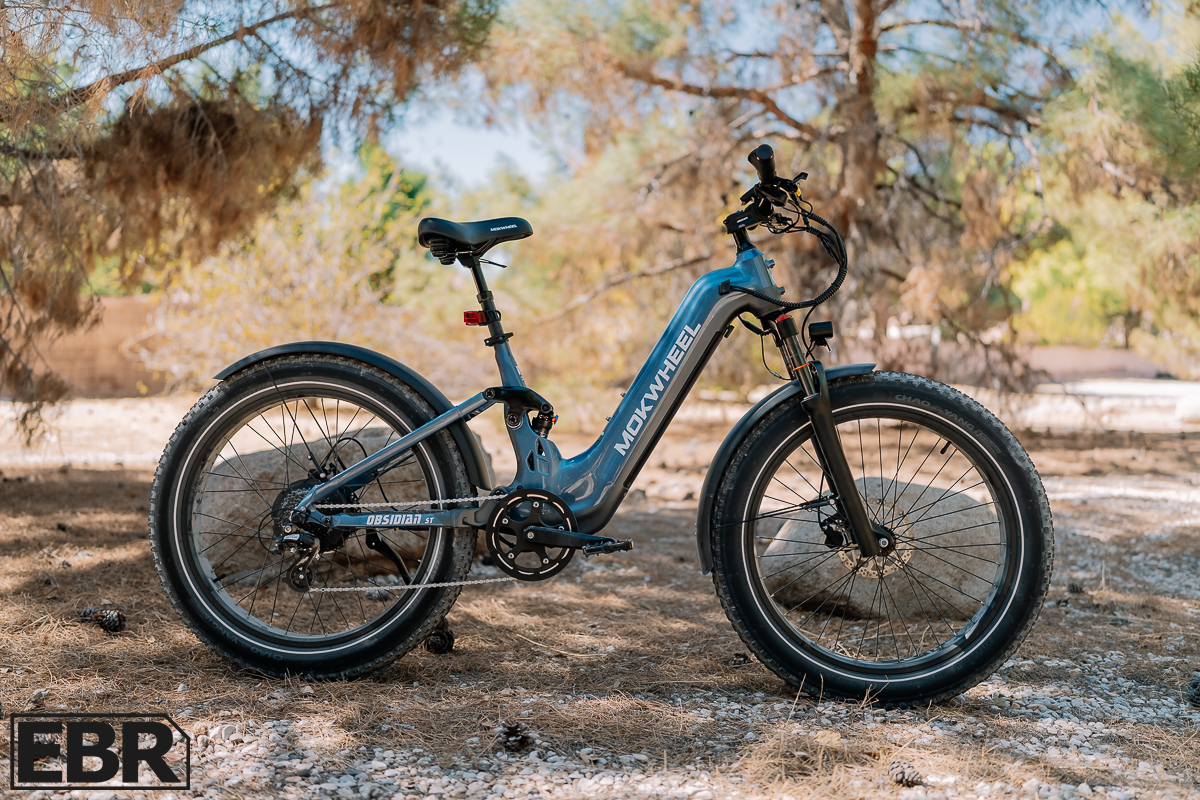
Reader Interactions